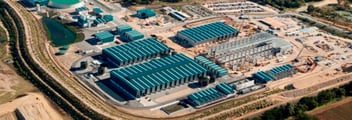Nurturing green hydrogen development through innovative methodologies

Although green hydrogen could become a significant part of the world’s renewable energy mix, there is still plenty of work to do before this becomes a reality. But one leading infrastructure company is leaning into nurturing innovation for better production practices.
SMEC has awarded Research and Development (R&D) funding to one of its specialist teams for the expansion of an innovative methodology for green hydrogen projects.
The novel methodology aims to capture and incorporate the complexity involved in the integration between renewable energy resources and the production of green hydrogen and its carriers.
SMEC Technical Principal – Power and Energy Jose Quizhpe said the company’s R&D fund INNOVATE has been developed to foster continuous improvement and growth through investment in innovation, research, software development and technology.
“The fund provides successful applicants with resource hours to undertake a project that helps to create client and industry value and technical advancements within SMEC’s capabilities,” he said.
“For this project we will have a multi-disciplinary team of technical specialists across key areas of the hydrogen supply chain. From energy and chemical process teams, through to power systems, ammonia process specialists, and safety and logistics.
“It is also a great example of how SMEC is collaborating with our parent company, Singaporean based, Surbana Jurong. Together, we are consolidating the essential technical expertise needed to harness hydrogen as a sustainable energy resource.”
SMEC ANZ CEO Kate Drews said she is incredibly pleased to have this project supported by SMEC’s INNOVATE Fund.
“As we transition to renewable energy, investment in new ideas, technology and methodologies will be crucial to our success. I look forward to seeing how the team brings these methodologies to life in partnership with our clients,” she said.
Facing complexities
Given how new the green hydrogen industry is, Quizhpe said it's crucial to focus on how green hydrogen systems will be configured in relation to the variability of renewables.
“Green hydrogen is a new industry combining several engineering and science fields,” he said.
“The scale of these projects, the complexity of configuring green hydrogen systems and the variability of power generated by renewable energy systems demand the industry to find technical and scientific solutions.
“There is also the need to provide an integrated solutions approach to the whole production lifecycle.”
Quizhpe said integrating green hydrogen systems poses complexities, primarily due to its nascent industry status, and limited benchmark data.
“Additionally, renewable energy systems haven't been constructed at the magnitude and intricacy needed to power green hydrogen systems,” he said.
“Traditionally, chemical processes are linear, whereas renewable sources like solar PV and wind are variable and intermittent. This nonlinearity contrasts with conventional hydrogen chemical processes.
“Traditional renewable energy systems haven't typically provided grid support, inertia, or other critical power system factors, adding layers of complexity to the challenge.”
From a sustainability perspective, while leveraging renewable energy sources, it's imperative to use these resources sustainably, Quizhpe said.
“We must ensure efficient use of water, land and minimise impacts on local communities, flora, and fauna,” he said.
“For the water industry, to minimise the impact of hydrogen production on water supply, it is crucial for hydrogen plant operators and policymakers to adopt efficient electrolysis technologies, implement water recycling and treatment processes, and ensure that water usage is sustainable and compliant with local regulations.
“Sustainable practices and technological advancements are key to managing the water supply impact of hydrogen plants.”
Adding to the mix
Quizhpe said the new approach seeks to encompass and address the intricacies of integrating renewable energy resources with green hydrogen production.
“By employing a comprehensive approach among components and evaluating how the variability and complementarity of renewable resources influence the ideal system design, this methodology stands out,” he said.
“At SMEC we pride ourselves on being a trusted partner for our clients as they strive to meet the challenges of the energy transition.
“Given the fast and evolving green hydrogen sector, clients and the market are looking for suitable methodologies and comprehensive energy models that capture the complexity of the different components of the system and provide reliable solutions that can take the projects through all the different stages of development, construction and bankability.”

